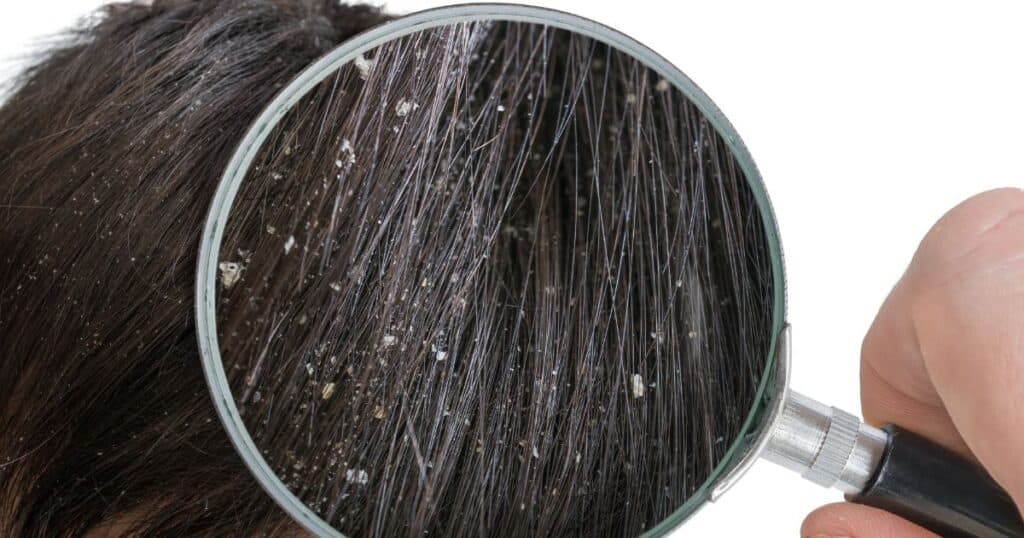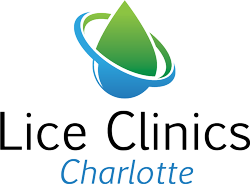Lice vs. Dandruff: Can Winter Dryness Make You Think You Have Lice?
Winter often brings its own set of hair woes, with many people confusing lice and dandruff due to the similar appearance of flakes and itching. This confusion is common, especially since up to 12 million children in the U.S. get lice each year, making it easy to mistake these pesky parasites for harmless winter dandruff.
An itchy scalp is one of the primary symptoms of both conditions. However, identifying the true cause is crucial to avoid unnecessary treatments. In this blog, we’ll help you distinguish between lice and dandruff so you can effectively address the right problem.

What Are Lice?
Lice are tiny, wingless parasites that inhabit the human scalp, feeding on blood and causing severe itching. They are primarily spread through direct head-to-head contact, which makes children, especially those in schools or daycare centers, most vulnerable.
Contrary to popular belief, lice cannot jump or fly. They crawl from one head to another, making physical contact the main route of transmission.
Symptoms of lice include:
- Intense itching: Caused by an allergic reaction to lice bites.
- Visible nits: Small, teardrop-shaped eggs attached firmly to the hair shaft close to the scalp.
- Live lice: Tiny, tan, or brown insects that can be seen moving on the scalp.
- Red bumps on the scalp: These are often a result of scratching.
- Irritated scalp: Due to frequent scratching and bites.
Proper head lice identification involves using a fine-toothed comb and checking for live lice and nits, particularly around the ears and the nape of the neck.
What Is Dandruff?
Winter dandruff is a common condition characterized by white or yellow flakes of dead skin that shed from the scalp. It often worsens during colder months when the air is dry and indoor heating strips moisture from the skin. Dandruff is not contagious and can affect anyone, though it’s especially noticeable in individuals with oily or very dry scalps.

Causes of dandruff include:
- Dry skin: Common in winter, this is the most frequent cause of dandruff.
- Seborrheic dermatitis: A more severe form of dandruff marked by red, greasy skin covered with flaky scales.
- Reaction to hair products: Certain shampoos, gels, and other hair products can irritate the scalp, leading to flaking.
- Fungal infection: The Malassezia yeast, which feeds on scalp oils, can also cause excessive skin cell shedding
Lice vs. Dandruff: How to Tell the Difference
Differentiating between lice and dandruff can be tricky, especially since both conditions cause itching and flaky scalps. Understanding their distinct characteristics helps in identifying the right treatment.
Itching
Both lice and dandruff cause itching, but the intensity varies. Lice bites trigger an allergic reaction, resulting in persistent, severe itching and a sensation of something crawling on the scalp. In contrast, dandruff-related itching is generally less intense. It is often accompanied by flaking due to a dry or oily scalp.
Location
Lice lay their eggs on hair shafts close to the scalp, particularly around the ears and neckline, while adult lice hide within the hair. Dandruff, on the other hand, affects only the scalp. Dandruff flakes fall off easily, appearing on the shoulders or clothing, unlike lice eggs that stick firmly to the hair.
Contagion
Lice are highly contagious and spread through direct contact, making early detection crucial. Dandruff is not contagious because it is a scalp condition that cannot be passed from one person to another.
Lymph Nodes
An unusual but telling sign of lice is swollen lymph nodes due to the body’s reaction to lice bites. Dandruff does not cause swollen lymph nodes, so if you notice this symptom, it’s more likely related to lice.
Color
Lice and their eggs are tan, brown, or yellowish-white, while dandruff flakes are typically white or yellow. The color distinction can help identify head lice during a scalp check.
How Can Winter Dryness Affect Your Scalp?
Cold weather and indoor heating systems exacerbate scalp dryness, leading to increased flaking that is often mistaken for dandruff. The combination of low humidity and artificial heat dries out the scalp, making the skin more prone to peeling. This situation can lead to itchy scalp causes that are mistaken for lice, especially when scratching the head becomes frequent.
To combat winter dryness and keep your scalp healthy, try the following tips:
- Use a humidifier: Adding moisture to the air helps prevent your scalp from becoming too dry due to indoor heating.
- Opt for moisturizing shampoos: Choose shampoos that are specifically designed to hydrate the scalp without stripping away natural oils.
- Apply scalp treatments: Use oils such as coconut, olive, or argan oil to nourish and soothe the scalp while reducing dryness and flaking.
- Avoid harsh hair products: Steer clear of shampoos and styling products with sulfates or alcohol, which can further dry out your scalp.
- Limit hot showers: Hot water can strip your scalp of its natural oils, so opt for lukewarm water instead.

What Should You Do If You Suspect Lice?
If you suspect lice, prompt action is crucial to prevent the spread. Treating lice at home involves using over-the-counter medicated shampoos and meticulous comb-outs to remove nits.
However, professional treatments often ensure better results and minimize the risk of lice recurrence. At The Lice Clinics, we offer highly effective lice removal options that combine expert care with proven methods:
Comb-Out Service
Our comb-out service is designed as a thorough, manual approach to removing lice and nits and is ideal for young children or those seeking a non-chemical solution. Performed by our trained clinicians, the comb-out method involves meticulously combing through the hair with a fine-tooth lice comb to physically remove lice and their eggs.
Full-Service Airtral Exclusive Treatment
Our most popular treatment option starts with a specialized method that utilizes the latest heated air dehydration technology to effectively eliminate lice. This process is followed by a manual comb-out performed by our expert clinician to ensure the removal of all nits and lice. To complete the treatment, an all-natural solution is applied to the scalp, offering a comprehensive approach to lice removal.
Understand the Differences to Make the Right Choice
Knowing the differences between lice and dandruff can save you from unnecessary stress and improper treatments. Lice are parasitic insects that require specific removal techniques. At the same time, dandruff is a non-contagious scalp condition caused by dryness, irritation, or fungus.
If you’re unsure about your symptoms, contact Lice Clinics Charlotte for a professional screening. Our expert team is equipped to provide accurate diagnosis and effective treatments for lice to keep your scalp healthy and comfortable all year round.
